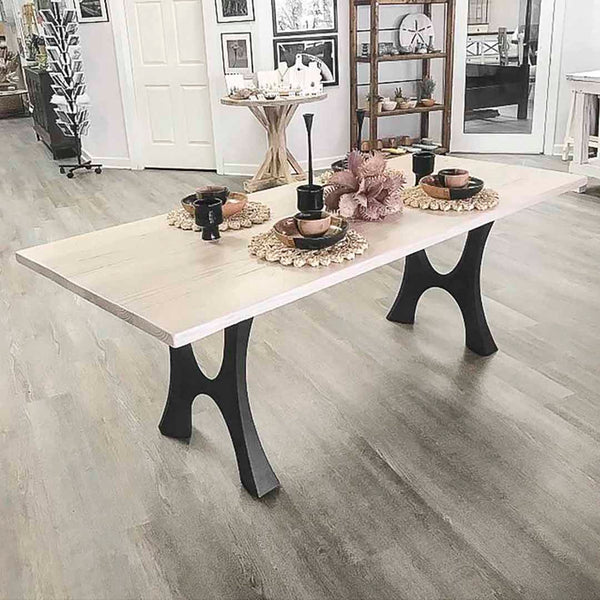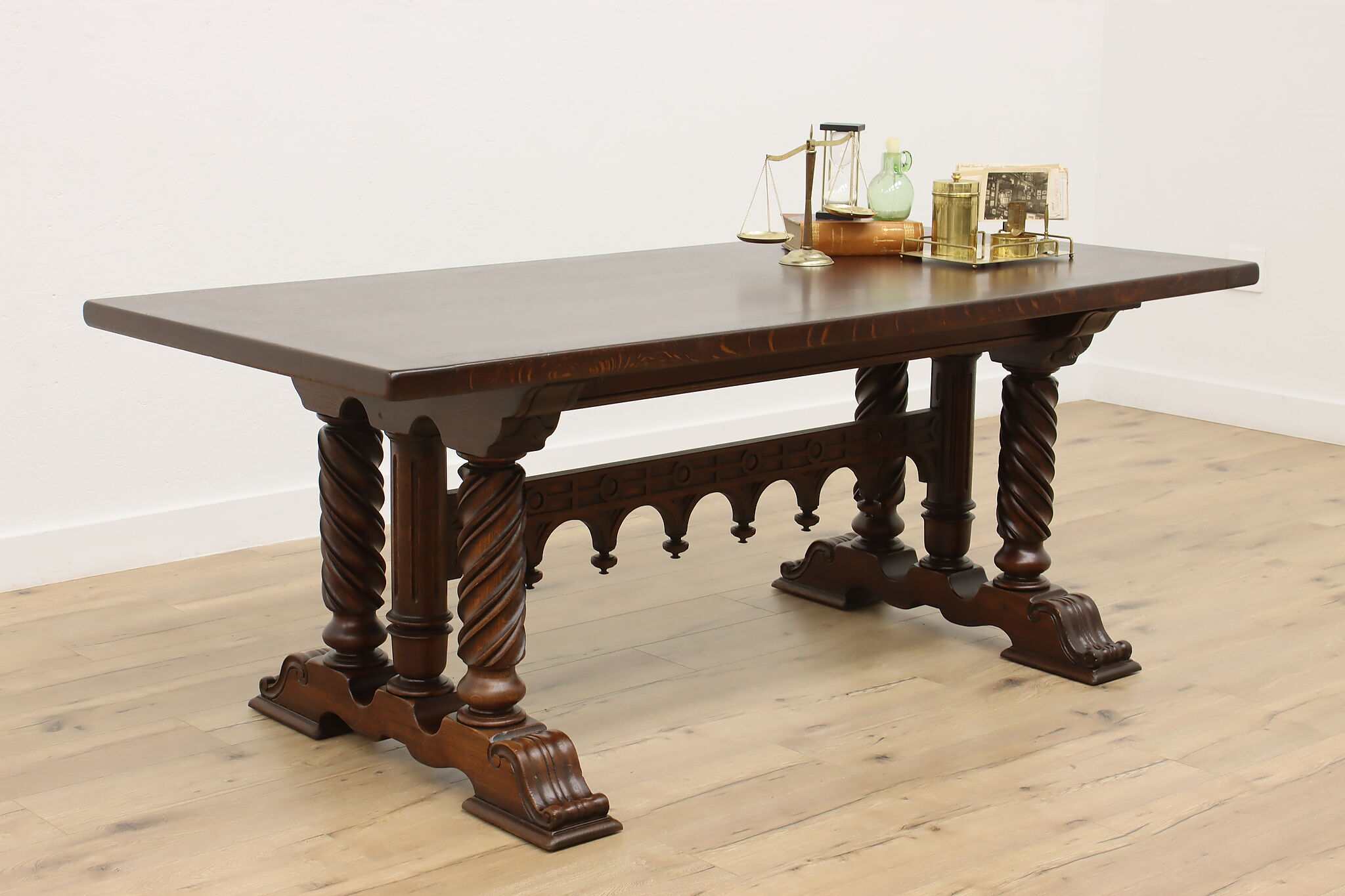The Top Trends in Dining Room Table Legs You Need to Know
The Top Trends in Dining Room Table Legs You Need to Know
Blog Article
From Conventional to Modern: Find the Ideal Eating Room Table Legs for Your Style
The choice of eating room table legs plays a pivotal function in defining the total personality of your space, linking the gap in between standard craftsmanship and modern-day appearances. While classic designs such as cabriole and transformed legs evoke a feeling of timeless elegance, contemporary styles like barrette and geometric options provide an opportunity for striking aesthetic rate of interest. Evaluating the ideal balance between these styles calls for a nuanced understanding of your existing design and individual preference. As you think about these aspects, the question stays: just how can you perfectly incorporate these diverse leg styles to produce a harmonious dining experience?
Understanding Table Leg Styles
The variety of eating space table leg designs can dramatically influence both the aesthetic appeals and performance of the room. Each leg design adds one-of-a-kind aesthetic aspects and functional attributes, catering to diverse layout choices and use needs. Recognizing these designs is critical for picking the appropriate dining table that straightens with your total interior decoration vision.
For example, conical legs supply a tidy, traditional look that can boost a room's elegance, while stand bases supply stability and make the most of legroom, making them excellent for smaller sized areas. Hairpin legs, a hallmark of mid-century modern design, present a commercial flair, allowing for a ventilated, open feeling. Likewise, trestle legs evoke rustic beauty, giving robust support and a sense of eternity.
Additionally, the selection of products plays a significant function. Wood legs can bring warmth and structure, whereas steel choices typically communicate a sleek, modern vibe. Inevitably, recognizing table leg designs is crucial for producing a natural dining location that mirrors personal design while ensuring functionality and comfort. By thoughtfully considering these components, you can improve both the functional and visual appeal of your dining room.
Conventional Table Leg Options
When picking dining-room table legs, typical options commonly personify timeless beauty and workmanship. These designs show an abundant heritage and a dedication to top quality, making them ideal for those who value traditional looks.
Among the most renowned conventional leg designs is the cabriole leg, defined by its elegant curved shape. This style usually includes attractive makings and is most typically discovered in Queen Anne and Chippendale furniture. One more prominent alternative is the transformed leg, which flaunts a collection of smooth, rounded forms that give a timeless look while maintaining stability.
Furthermore, the straight leg, while easy, supplies a sturdy and unadorned framework that can blend effortlessly with a range of tabletop styles. For those drawn to ornate describing, claw-and-ball feet legs stimulate a feeling of magnificence and can act as a stunning centerpiece in any type of eating space.
Lastly, pedestal bases, although not strictly legs, offer an alternate typical choice that permits sufficient legroom and can be wonderfully carved. Each of these typical leg designs adds to the general ambiance of a dining-room, marrying function with visual charm.

Modern Table Leg Designs
Modern table leg layouts use a diverse variety of designs that stress innovative materials and clean lines. These styles commonly prioritize performance while acting as striking centerpieces within a dining area. Minimal looks are common, with legs crafted from materials such as metal, glass, and crafted timber, which add to a modern and ventilated feeling.
One popular layout is the barrette leg, defined by its slim, conical structure that provides stability without overwhelming the table top (dining room table legs). This style is frequently found in mid-century contemporary furnishings and can easily complement numerous table shapes. Another trend is making use of geometric forms, where legs may tackle unbalanced or angular types, including aesthetic passion and a touch of virtuosity

Blending Designs for One-of-a-kind Rooms
Commonly, home owners seek to produce one-of-a-kind dining areas that show their personal design by mixing numerous layout elements. This method permits the consolidation of varied aesthetics, causing an unified Visit Website yet distinct atmosphere. For instance, pairing a rustic wooden table with sleek, contemporary steel legs can produce an appealing contrast that elevates the room's overall charm.
In addition, integrating vintage table legs with contemporary tabletops can stimulate a feeling of history while preserving go to this site a contemporary sensibility. Such mixes not only display private taste but additionally motivate creative thinking, allowing homeowners to curate an area that feels both personal and welcoming.
Shade plays an important duty in this blending procedure; selecting table legs that match or contrast with the existing color design can enhance visual rate of interest. Whitewashed legs can soften the daring of a dark table surface, creating a well balanced aesthetic.
Tips for Choosing the Right Legs
Selecting the right table legs is important for accomplishing both capability and aesthetic charm in your dining area. Begin by thinking about the general style of your area. Conventional setups take advantage of legs that feature elaborate carvings or transformed layouts, while contemporary rooms might require streamlined, minimal designs.
Next, evaluate the height and security of the legs. dining room table legs. Basic table range between 28 to 30 inches in elevation, so guarantee the legs complement this measurement for convenience. Additionally, durable materials, such as wood or metal, can boost security and durability
Assess the leg form as well-- choices consist of directly, tapered, or pedestal designs. Straight legs provide discover here a classic appearance, while tapered legs can add a touch of style. Pedestal bases provide ample legroom and are suitable for smaller sized areas.
Conclusion
In recap, selecting the ideal eating room table legs calls for careful consideration of both modern and traditional styles. By integrating leg style, elevation, and product with the total decoration, a natural and inviting ambience can be attained.
The range of dining space table leg designs can significantly affect both the appearances and functionality of the area. Inevitably, recognizing table leg designs is important for creating a cohesive dining location that mirrors personal design while guaranteeing functionality and convenience.One of the most famous conventional leg designs is the cabriole leg, identified by its stylish bent shape. Straight legs offer a classic appearance, while tapered legs can add a touch of sophistication.In recap, choosing the perfect eating room table legs calls for careful factor to consider of both conventional and contemporary styles.
Report this page